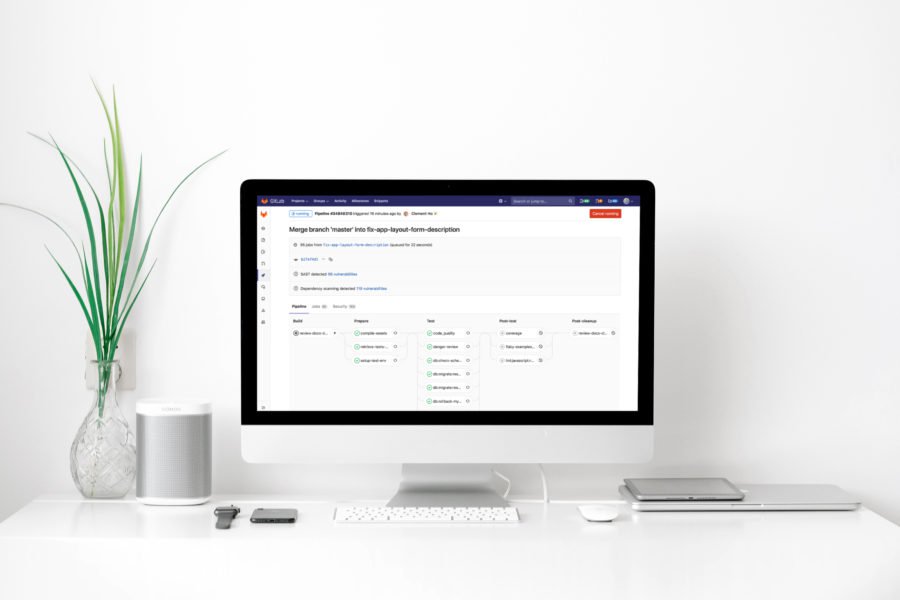As you've probably guessed by the title of my article, I still consider Ruby on Rails as a relevant technology that offers a lot of value, especially when combined with ReactJS as it's frontend counterpart. Here's how I approach the topic.
Example Gitlab Pipeline Configuration for Rails Projects
Gitlab Pipeline for Rails is the main part of a powerful GitLab CI/CD tool and can be a useful alternative for other applications like Jenkins and TeamCity. If you’re looking for some more detailed information on exactly how it works, we’ve compiled an example configuration that can help you.
Tutorial: Upload Files with Rails Active Storage and react-dropzone-component
We’re going to build an app to manage breakfast recipes. We won’t focus on developing all CRUD functionality, because it’s not in our scope. Instead, we’re going to focus on four main steps.
8 Startups That Owe Their Success to Ruby on Rails
Ruby on Rails is an established, battle-tested technology that served as an excellent framework for software developers. But what’s the secret behind the success of Rails? One good reason is that ever since it appeared on the tech scene, it’s been part of projects launched by companies that have become some of the fastest-growing and largest startups we’ve ever seen.
Integrate Rails Application with React Using Webpacker Gem
Webpacker can be an interesting alternative to the popular create-react-app tool. Learn how to use this gem to integrate Rails with React.
A RoR Developer Internship From an Ex-intern Perspective
It’s been almost half a year since I started my job as an Intern Ruby on Rails Developer at Nopio (now a more experienced Junior) and I’ve decided to share some thoughts on how expectation compares with reality in regards to your first job in web development, and to offer some advice that may be helpful from someone who has been there.
How to Set Up Redirects in a Ruby Rack Application
Thankfully, there is a really useful Ruby gem called rack-rewrite that can handle all redirects for you. The implementation is really easy and doesn’t take a lot of time. The biggest advantage of this library is the fact that you can use it with pure Ruby application, without Rails.
Why Reversible Migrations Are Important and How to Write Them?
Migrations in Rails are files, which are responsible for making any changes in the database and they convert a Ruby code into a SQL code.
Gems Which Would Make Your Rails Code Look Awesome
For programmers, building a website from scratch requires maximum effort, skill and creativity. You definitely need the building process to flow with ease while you enjoy the work. Basically, this gives you ample time to ensure that you develop a website app with complete features and fewer issues.Gone are the days when you would spend months to build a web application. Ruby on Rails technology has made this absolutely easy for web developers.There are several gem versions that can be used to build web projects. It is just a matter of using the right gem to complete the relevant task on your Rails application. Find out the eleven commonly used gems in this article.
How to Implement SSO System in Rails Using CAS Server
Single-Sign-On is a hot topic right now. Several applications such as Google, Facebook, and Github use it. Probably you’ve noticed on some pages a “Sign in with Google” or “Login with Facebook” button which enables a user to log in to a page without creating a new account.Once you click on the button, you are redirected to the application. This is referred to SSO; it’s a system which enables access to different pages/application using just one account, so you don’t need to care about multiple passwords and accounts.
How to Create an API Wrapper of an External Service in Rails
Have you ever had the problem when you wanted to use an external API that didn’t have a ready-made library and you needed to write everything from scratch? You weren’t sure how everything should be split and separated in order to write readable and clear code?If you answered yes to any of these questions, this article is for you. I’ll show you how to write code that is responsible for connecting with the external API and how to split everything in order to write clear and maintainable code. It doesn’t matter if you use Rails or plain Ruby code, this code is flexible, so you can use it wherever you want.
How to Organize Large Rails Applications
I think a lot of you have faced a problem with your Rails application. It’s getting bigger and bigger, it’s really hard to maintain? You have too many models and they are too big? It’s really hard to find something in your code and you have duplicated it in many places? I think that it’s normal.By default, Rails gives us only three layers - models, controllers and views. Oh, I forgot, we also have helpers!














